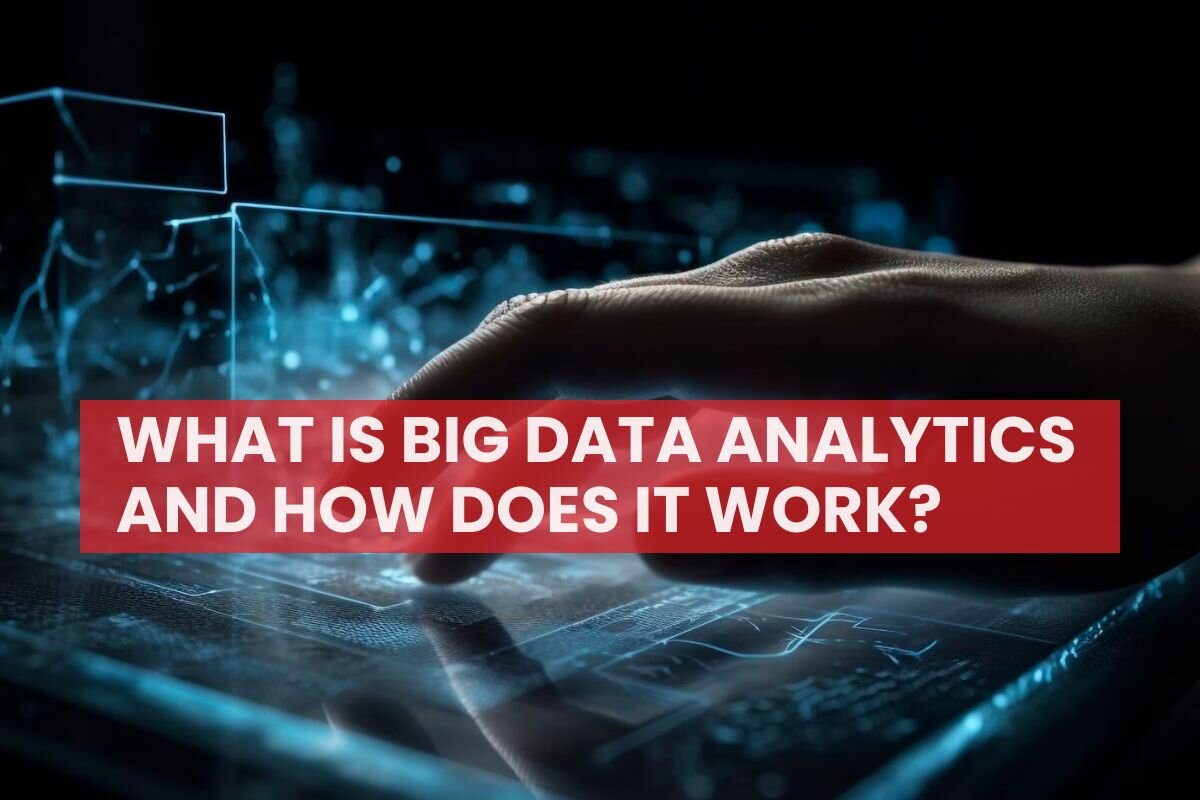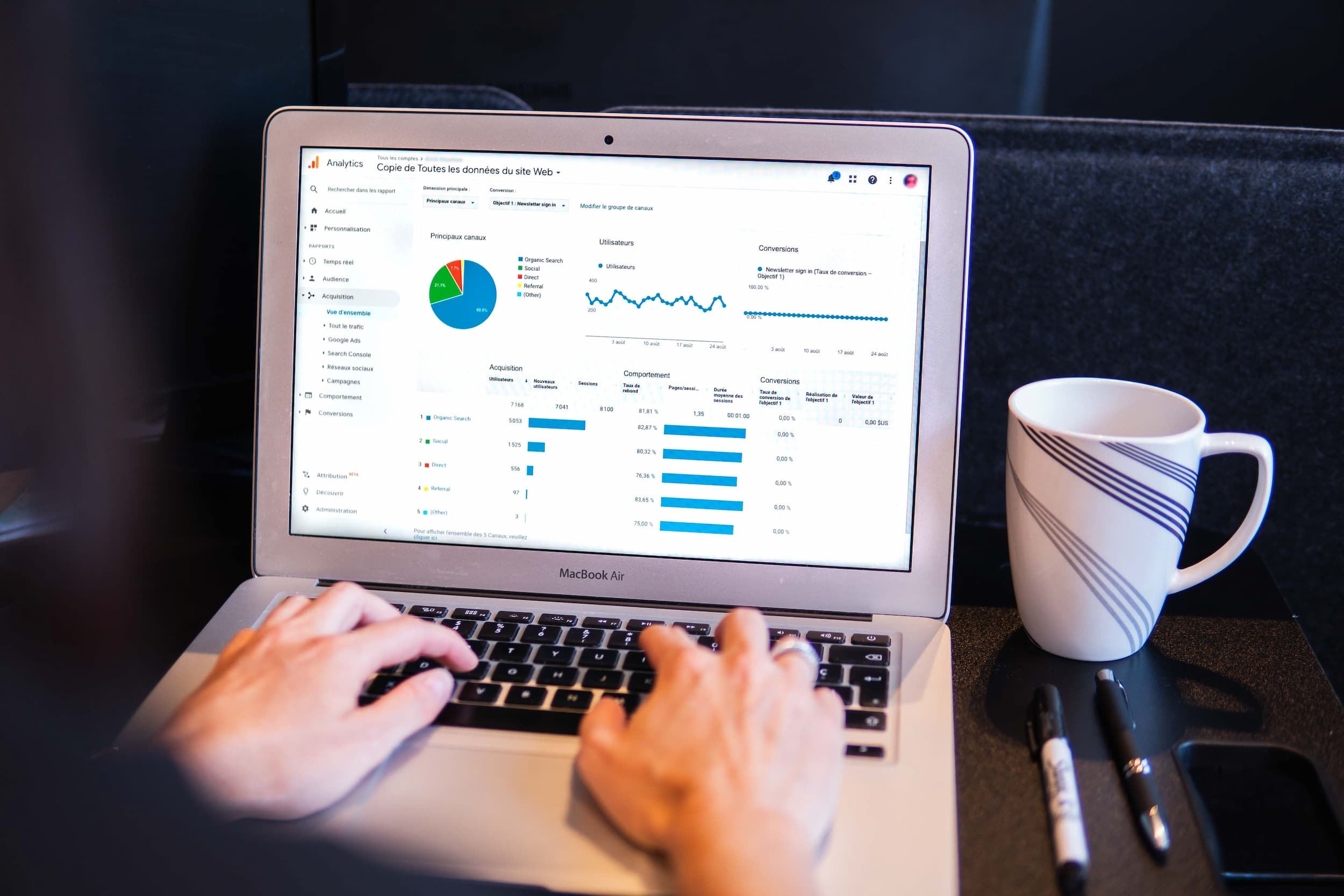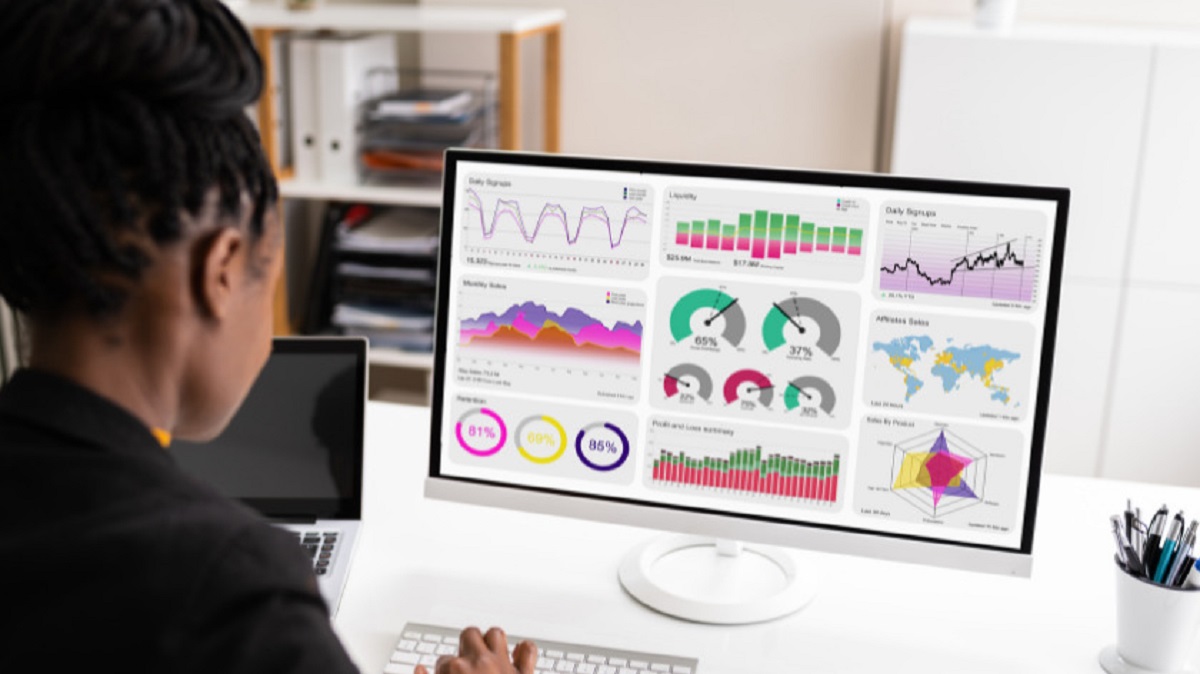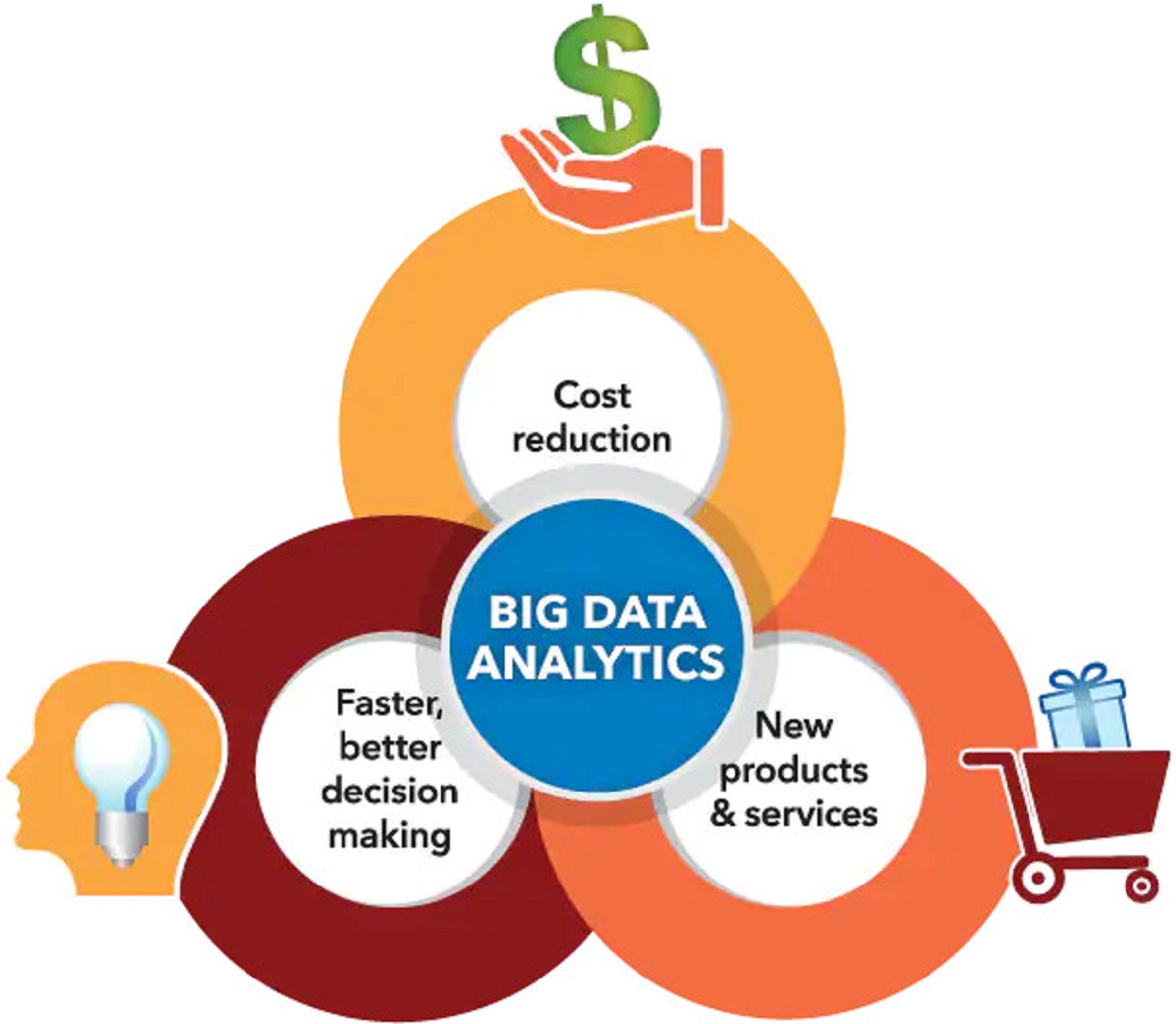Introduction
Big Data analytics has become an integral part of modern businesses, revolutionizing how organizations make informed decisions, identify trends, and gain valuable insights. The growth of digital data is unprecedented, with a staggering amount of information being generated every day. With this influx of data, businesses must leverage powerful analytics techniques to unlock the potential hidden within.
The field of Big Data analytics encompasses a wide range of features and capabilities, each contributing to the overall process of extracting meaningful insights from large and complex datasets. From data collection and storage to processing, analysis, and visualization, the features of Big Data analytics play a vital role in transforming raw data into actionable information.
In this article, we will explore the different features of Big Data analytics, highlighting their importance and how they contribute to the overall data analysis process. Understanding these features is crucial for organizations seeking to harness the power of Big Data and gain a competitive edge in today’s data-driven world.
Data Collection
Data collection is the first step in the Big Data analytics process. It involves gathering and acquiring the vast amount of data from various sources. These sources may include internal databases, external APIs, social media platforms, IoT devices, and more. The key challenge in data collection lies in gathering the right data that is relevant to the analysis objectives.
There are different methods and technologies used for data collection in Big Data analytics. One common approach is web scraping, which involves extracting data from websites and online sources. This technique is particularly useful for gathering data related to market trends, customer sentiments, and competitor analysis.
Another method is through the utilization of IoT devices, which generate enormous amounts of data in real-time. These devices, such as sensors and smart devices, collect data on various aspects, including temperature, humidity, location, and more. This real-time data can be valuable for industries such as healthcare, transportation, and manufacturing, enabling them to make quick and informed decisions.
Furthermore, social media platforms have become a goldmine of data, providing insights into customer behavior, preferences, and opinions. Analyzing social media data allows businesses to understand how their brand is perceived, identify emerging trends, and engage with their target audience more effectively.
Data collection also involves data preprocessing, where the raw data is cleaned, validated, and transformed into a usable format. This process ensures that the collected data is accurate, consistent, and ready for analysis. Data cleansing techniques involve handling missing values, removing duplicates, and addressing outliers.
Effective data collection is critical as it forms the foundation for all subsequent analysis processes. Accurate and comprehensive data collection leads to more reliable and meaningful insights. Therefore, organizations must invest in robust data collection strategies and tools to gather high-quality data that aligns with their analytics goals.
Data Storage and Management
Data storage and management are essential features of Big Data analytics, as they involve storing and organizing large volumes of data efficiently. With the exponential growth of data, organizations need robust storage systems that can handle the vast amounts of information generated.
Traditional relational databases are not suitable for storing and managing Big Data due to their limitations in scalability and performance. Instead, organizations utilize modern technologies such as distributed systems, data lakes, and cloud storage to meet their storage needs.
Distributed systems, such as Apache Hadoop and Apache Spark, enable organizations to store and process large datasets across clusters of inexpensive commodity hardware. These systems provide fault tolerance and allow for parallel processing, significantly enhancing the speed and efficiency of data analysis.
Data lakes serve as centralized repositories for storing structured and unstructured data in its raw format. Unlike traditional databases, data lakes allow for storing diverse data types without the need for predefining a schema. This flexibility enables organizations to capture and store vast amounts of data from various sources, providing a foundation for exploratory analysis and data discovery.
Cloud storage has emerged as a popular option for data storage and management. Cloud platforms such as Amazon Web Services (AWS), Microsoft Azure, and Google Cloud Platform offer scalable storage solutions that can handle the volume, velocity, and variety of Big Data. These platforms provide features such as automatic scaling, data replication, and built-in security, making it easier for organizations to manage their data effectively.
In addition to storage, data management involves organizing and cataloging data to ensure easy access and retrieval. Metadata management plays a crucial role in data management, as it provides information about the content, context, and structure of the data. Metadata allows data analysts and scientists to understand the data and its characteristics, facilitating efficient data exploration and analysis.
Proper data storage and management are vital for Big Data analytics, as they enable organizations to leverage their data assets effectively. By employing scalable storage solutions and implementing robust data management practices, organizations can optimize data accessibility, enhance data quality, and streamline the analytical process.
Data Integration
Data integration is a crucial feature of Big Data analytics that involves combining and harmonizing data from multiple sources to create a unified view. In today’s data-driven world, organizations deal with data coming from various systems, databases, and applications, often in different formats and structures.
The goal of data integration is to break down data silos and create a holistic view of the organization’s data assets. By integrating diverse data sources, organizations can gain a more comprehensive understanding of their operations, customers, and market trends.
Data integration requires a combination of tools, technologies, and techniques to bridge the gap between disparate data sources. ETL (Extract, Transform, Load) processes are commonly used to extract data from different sources, transform the data into a consistent format, and load it into a target system, such as a data warehouse.
Data integration can be challenging due to various factors, including data inconsistencies, schema differences, and data quality issues. Organizations must invest in data cleansing and data transformation techniques to ensure the accuracy and consistency of the integrated data.
In addition to traditional ETL processes, organizations are also adopting modern approaches such as data virtualization and data federation for data integration. These approaches allow organizations to create a virtual federated view of the data without physically moving or duplicating it. Data virtualization enables real-time access to integrated data, simplifies data governance, and reduces the complexity of data integration.
Data integration not only facilitates a comprehensive view of the data but also enables organizations to perform advanced analytics and gain deeper insights. By combining and integrating data from various sources, organizations can unlock hidden patterns, correlations, and trends that would be difficult to uncover by analyzing individual datasets.
Effective data integration is crucial for organizations seeking to derive maximum value from their Big Data. By breaking down data silos and creating a unified view of the data, organizations can make more informed decisions, drive innovation, and gain a competitive edge in today’s data-driven landscape.
Data Processing and Analysis
Data processing and analysis are fundamental features of Big Data analytics that involve transforming and extracting meaningful insights from the collected data. This process typically occurs after data integration, where the integrated data is prepared for analysis.
Data processing involves a series of steps that aim to clean, transform, and aggregate the data to make it suitable for analysis. This includes filtering out irrelevant data, handling missing values, normalizing data, and performing data aggregation or summarization. Data processing techniques may vary depending on the specific analytical goals and the nature of the data.
Once the data is processed, it is ready for analysis. Data analysis involves applying various statistical and machine learning techniques to uncover patterns, trends, correlations, and other valuable insights within the data. Organizations can use descriptive analytics to understand what has happened in the past, diagnostic analytics to analyze why something happened, predictive analytics to forecast future trends, and prescriptive analytics to suggest possible actions or recommendations.
Traditional analytics techniques such as regression analysis, clustering, and classification are commonly used in data analysis. However, with the advent of Big Data, organizations are turning to more advanced techniques such as machine learning and deep learning to extract insights from large and complex datasets. These techniques have the ability to uncover hidden patterns, predict outcomes, and make data-driven recommendations.
Data analysis also involves data visualization, which is the process of presenting data in a visual format such as charts, graphs, and dashboards. Visualizing data allows for better understanding and interpretation of the insights derived from the data. It enables stakeholders to grasp complex information quickly and make data-driven decisions.
Data processing and analysis are crucial features of Big Data analytics as they enable organizations to unlock actionable insights and gain a competitive advantage. By applying various analytical techniques and visualizing the results, organizations can make informed decisions, optimize processes, identify new opportunities, and improve overall business performance.
Data Visualization
Data visualization is a critical feature of Big Data analytics that involves presenting data in a visual format, such as charts, graphs, maps, and dashboards. It enables organizations to understand complex data, identify patterns, and communicate insights effectively.
Effective data visualization plays a crucial role in data-driven decision-making. It allows stakeholders to grasp information quickly, make comparisons, and spot trends or anomalies. With the vast amount of data being generated, data visualization helps to distill the information into meaningful visual representations.
One of the key benefits of data visualization is its ability to simplify complex data sets. Through visual representations, such as line charts, bar graphs, or heatmaps, complex data can be understood at a glance. Trends, patterns, and relationships become apparent, enabling stakeholders to make data-driven decisions with confidence.
Data visualization also aids in uncovering insights that may be missed through other analytical techniques. By representing data visually, it becomes easier to detect outliers, anomalies, and correlations. This enables organizations to discover new opportunities, optimize processes, and identify areas of improvement.
Moreover, interactive data visualization allows users to drill down and explore the data further. With interactive dashboards or visualizations, users can filter or manipulate the data dynamically, gaining deeper insights and answering specific questions. This interactivity enhances the exploratory and analytical capabilities of Big Data analytics.
Data visualization techniques can be applied across various domains and industries. For example, in finance, visualizing stock market trends can help traders make informed investment decisions. In healthcare, visualizing patient data can aid in identifying patterns and improving diagnosis and treatment. In marketing, visualizing customer demographics and purchase patterns can guide targeted marketing campaigns.
Furthermore, with advancements in technology, data visualization has become more interactive and immersive. Virtual Reality (VR) and Augmented Reality (AR) technologies allow users to explore and interact with data in three-dimensional space, enhancing the depth and understanding of complex datasets.
Effective data visualization requires a careful selection of appropriate visualization techniques, considering factors such as the type of data, the intended audience, and the analytical goals. It is essential to choose the right visualization tools and techniques that best represent the data and convey the intended message.
By leveraging the power of data visualization, organizations can transform raw data into actionable insights, improve decision-making processes, and drive positive business outcomes.
Machine Learning and Predictive Analytics
Machine learning and predictive analytics are powerful features of Big Data analytics that leverage advanced algorithms and techniques to uncover patterns, predict outcomes, and make data-driven predictions. These technologies enable organizations to move beyond descriptive and diagnostic analytics and proactively anticipate future trends and behavior.
Machine learning is a subset of artificial intelligence that allows computer systems to automatically learn and improve from experience without being explicitly programmed. It involves the development of models and algorithms that can analyze and interpret data, identify patterns, and make predictions or decisions based on the patterns identified.
Predictive analytics, on the other hand, is the process of using historical data and statistical models to anticipate future outcomes or behaviors. It involves analyzing patterns in the data and identifying variables that are most influential in making predictions.
Machine learning and predictive analytics can be applied to a wide range of scenarios and industries. For example, in e-commerce, these technologies can be used to recommend products to customers based on their browsing and purchasing history. In manufacturing, predictive analytics can help predict equipment failure and optimize maintenance schedules, reducing downtime and costs.
One of the key advantages of machine learning and predictive analytics is their ability to handle vast amounts of data quickly and efficiently. Big Data provides the necessary volume and variety of data required to build accurate and reliable models. These models can then be used to make predictions and forecasts in real-time.
Machine learning algorithms can be categorized into several types, including supervised learning, unsupervised learning, and reinforcement learning. Supervised learning involves training a model using labeled data, where the model learns to make predictions based on known outcomes. Unsupervised learning, on the other hand, explores patterns and relationships in unlabeled data to gain insights and identify groups or clusters. Reinforcement learning involves training a model through a system of rewards and punishments, enabling it to learn and improve its performance over time.
Predictive analytics often involves the use of statistical models such as regression, time series analysis, decision trees, and neural networks. These models are trained and optimized using historical data to make accurate predictions on future data.
The combination of machine learning and predictive analytics allows organizations to make data-driven decisions and take proactive actions. By leveraging the insights gained through these technologies, organizations can identify opportunities, mitigate risks, optimize processes, and make informed strategic decisions.
However, it is important to note that machine learning models and predictive analytics are not foolproof. They require careful consideration of data quality, feature selection, model evaluation, and ongoing monitoring to ensure accuracy and reliability.
Machine learning and predictive analytics are powerful tools that enable organizations to go beyond traditional analytics and gain a competitive edge in today’s data-driven landscape.
Real-time Analytics
Real-time analytics is a crucial feature of Big Data analytics that enables organizations to analyze and gain insights from data in near real-time. With the increasing speed at which data is generated and the growing need for instant decision-making, real-time analytics has become vital for organizations across various industries.
Traditional batch processing methods were used to analyze data in large volumes, which often involved delays and limited the ability to derive real-time insights. However, with the advancements in technology and the availability of high-speed data processing frameworks, organizations can now analyze and act upon data as it is generated.
Real-time analytics enables organizations to monitor and respond to critical events as they occur. By analyzing data in real-time, businesses can detect anomalies, identify trends, and make immediate decisions based on the insights gained.
Real-time analytics finds applications in several domains. In finance, it allows for real-time fraud detection and risk analysis. In healthcare, it enables real-time monitoring of patient data, allowing for early detection of medical conditions and timely intervention. In logistics, it enables tracking and optimization of supply chain operations.
The technologies used in real-time analytics include complex event processing (CEP), stream processing, and in-memory computing. CEP allows organizations to define rules and patterns that can be applied to incoming data streams in real-time. Stream processing frameworks, such as Apache Kafka and Apache Storm, enable organizations to process and analyze streaming data quickly and efficiently. In-memory computing facilitates rapid data processing by storing data in memory for immediate access and analysis.
Real-time analytics also requires robust data integration and data preprocessing capabilities. Organizations must ensure that data from various sources is seamlessly and continuously integrated, and that it is cleansed and transformed in real-time to maintain data accuracy and quality.
The benefits of real-time analytics are numerous. It enables organizations to act quickly on emerging opportunities, identify and mitigate risks promptly, personalize customer experiences in real-time, and optimize operational efficiency. Real-time analytics can also enhance decision-making processes by empowering organizations with up-to-the-minute insights.
However, it is crucial to ensure that real-time analytics is implemented effectively. This involves having the right infrastructure and technologies in place, such as high-speed data ingestion systems, scalable processing frameworks, and real-time visualization tools. Additionally, organizations must have a clear understanding of the specific use cases and objectives they want to achieve through real-time analytics.
Real-time analytics empowers organizations to make agile and data-driven decisions by providing timely insights. By harnessing the power of real-time data processing, organizations can stay ahead of the competition, respond swiftly to changing market conditions, and drive innovation and growth.
Sentiment Analysis
Sentiment analysis, also known as opinion mining, is a valuable feature of Big Data analytics that focuses on understanding and analyzing the sentiment and opinions expressed in textual data. With the prevalence of social media platforms, online reviews, and customer feedback, sentiment analysis has become crucial for organizations to gauge public opinions, assess brand reputation, and make data-driven decisions.
Sentiment analysis involves the use of natural language processing (NLP) and machine learning techniques to classify and analyze the sentiment of text. It aims to determine whether a given text expresses a positive, negative, or neutral sentiment.
The process of sentiment analysis usually starts with data preprocessing, which involves tasks such as tokenization, stemming, and removing stop words to clean the textual data. Next, the data is transformed into numerical features using techniques such as bag-of-words or word embeddings.
Machine learning algorithms, such as Naive Bayes, Support Vector Machines (SVM), or Recurrent Neural Networks (RNN), are then trained on labeled datasets to classify the sentiment of the text. These models learn from the labeled data and can subsequently predict the sentiment of new, unlabeled text with a high degree of accuracy.
Sentiment analysis finds applications in various industries. In marketing, it helps organizations understand customer sentiment towards their products or services and allows targeted advertising campaigns to be tailored accordingly. In customer service, sentiment analysis can identify dissatisfied customers or potential issues and enable proactive measures to address them effectively.
Real-time sentiment analysis is also valuable for monitoring and responding to public opinion on social media platforms. Organizations can track customer opinions and sentiments in real-time, enabling them to promptly address any negative feedback or engage with positive sentiment to enhance brand reputation.
However, sentiment analysis is not without its challenges. The inherent complexities of language, including sarcasm, irony, and cultural nuances, can pose difficulties in accurately capturing sentiment. Domain-specific terminology, slang, and context can also impact the accuracy of sentiment analysis models.
To overcome these challenges, organizations must invest in robust training datasets that encompass a wide range of language variations and contexts. Continuous monitoring and fine-tuning of sentiment analysis models will also help improve accuracy over time.
Sentiment analysis is a powerful tool that allows organizations to gain insights into public sentiment and make data-driven decisions. By leveraging the insights derived from sentiment analysis, organizations can enhance customer satisfaction, improve brand reputation, and gain a competitive advantage in the marketplace.
Text Mining and Natural Language Processing
Text mining and natural language processing (NLP) are essential features of Big Data analytics that focus on extracting valuable insights and meaning from unstructured textual data. With the exponential growth of digital content, organizations can leverage text mining and NLP techniques to unlock the wealth of information embedded in text and make informed decisions.
Text mining involves the process of extracting information, patterns, and knowledge from large volumes of unstructured text data. It encompasses tasks such as text categorization, entity recognition, information extraction, and sentiment analysis. By applying machine learning algorithms and linguistic techniques, organizations can transform unstructured text into structured data that is amenable to analysis.
Natural language processing, on the other hand, involves the ability of computer systems to understand, interpret, and manipulate human language. It encompasses tasks such as part-of-speech tagging, parsing, named entity recognition, and language translation. NLP techniques enable machines to comprehend and process language in a way that is meaningful to humans.
Text mining and NLP find applications across various industries. In finance, these techniques can be used to analyze news articles and social media posts to identify trends and sentiment that impact stock market performance. In healthcare, text mining can aid in the analysis of medical records and research papers to extract pertinent information and improve patient care.
Text mining and NLP techniques are particularly valuable in customer service and e-commerce. Organizations can analyze customer feedback, online reviews, and social media posts to gain insights into customer opinions, preferences, and sentiment. This information can help improve products and services, personalize customer experiences, and enhance customer satisfaction.
Key challenges in text mining and NLP include dealing with linguistic variations, context ambiguity, and the inherent complexities of human language. Techniques such as machine learning, statistical modeling, and deep learning are applied to overcome these challenges and improve the accuracy and effectiveness of text mining and NLP models.
Recent advancements in deep learning, such as recurrent neural networks (RNNs) and transformers, have significantly improved the performance of NLP models. These models can now generate human-like text, perform language translation with high accuracy, and understand the context and sentiment of textual data more effectively than ever before.
Organizations investing in text mining and NLP capabilities can gain a competitive edge by harnessing the valuable information contained within textual data. By unlocking insights from unstructured text, organizations can make data-driven decisions, automate processes, improve customer experiences, and drive innovation and growth.
Data Security and Privacy
Data security and privacy are vital considerations in Big Data analytics. The exponential growth of data, coupled with the increasing sophistication of cyber threats, highlights the importance of protecting sensitive information and ensuring data privacy throughout the analytics process.
Organizations must implement robust security measures to safeguard data from unauthorized access, theft, or breach. This includes encrypting data both at rest and in transit, implementing access controls and authentication mechanisms, and regularly updating security protocols to mitigate emerging risks.
Additionally, organizations must comply with relevant data protection regulations, such as the General Data Protection Regulation (GDPR) in the European Union and the California Consumer Privacy Act (CCPA) in the United States. These regulations establish guidelines for collecting, storing, and processing personal data, and emphasize the rights and privacy of individuals.
Implementing data security and privacy measures involves having a comprehensive data governance framework. This framework outlines policies, procedures, and controls for data management, data sharing, and ensuring compliance with applicable regulations.
Furthermore, organizations must prioritize data anonymization and de-identification techniques to protect the privacy of individuals and sensitive information. Anonymizing data removes personally identifiable information (PII), reducing the risk of unauthorized identification of individuals. De-identifying data involves removing or altering any direct identifiers, such as names or social security numbers, to prevent re-identification.
Data protection measures should also consider the ethical implications of data usage. Organizations need to ensure that data collected and analyzed is done so with the informed consent of individuals, and that they are transparent about the purposes for which the data is being used.
Another aspect of data security is data backup and disaster recovery. Organizations should regularly back up their data and have measures in place to recover and restore data in the event of a system failure or data loss.
Employee training and awareness initiatives play a crucial role in maintaining data security and privacy. Employees should be educated on best practices, such as password management, identifying and reporting security incidents, and understanding their role in protecting data.
By prioritizing data security and privacy, organizations can build trust with their customers, protect their brand reputation, and mitigate the financial and legal risks associated with data breaches or non-compliance with regulations. It is essential for organizations to view data security and privacy as an integral part of their Big Data analytics strategy and ensure they have the necessary measures in place to protect data throughout its lifecycle.
Conclusion
Big Data analytics has revolutionized the way organizations make informed decisions, identify trends, and gain valuable insights. The features of Big Data analytics discussed in this article, including data collection, storage and management, integration, processing and analysis, visualization, machine learning and predictive analytics, real-time analytics, sentiment analysis, text mining and natural language processing, and data security and privacy, play a crucial role in extracting meaning from large and complex datasets.
Data collection serves as the foundation, ensuring relevant and accurate data is gathered from various sources. Efficient data storage and management allow organizations to handle large volumes of data and ensure its accessibility and usability. Data integration enables organizations to break down data silos and create a unified view, enabling comprehensive analysis. Data processing and analysis techniques unlock patterns and insights, empowering organizations to make data-driven decisions. Data visualization enhances understanding and communication of insights through visual representations. Machine learning and predictive analytics enable proactive decision-making and accurate forecasts.
Real-time analytics allows organizations to analyze and respond to data in real-time, enabling timely actions and competitive advantages. Sentiment analysis helps understand customer opinions and sentiments, while text mining and natural language processing enable valuable insights extraction from unstructured textual data. Finally, data security and privacy are vital to protect sensitive information and ensure compliance with regulations.
By leveraging the features of Big Data analytics, organizations can harness the power of their data to drive operational efficiency, enhance customer experiences, identify new opportunities, and make strategic decisions that lead to business growth. However, it is crucial for organizations to embrace these features responsibly, respecting data privacy, ensuring data security, and complying with relevant regulations.
In summary, Big Data analytics offers immense potential for organizations across industries. By understanding and utilizing the different features discussed, organizations can unlock the transformative power of their data, stay ahead of the competition, and thrive in today’s data-driven world.

























